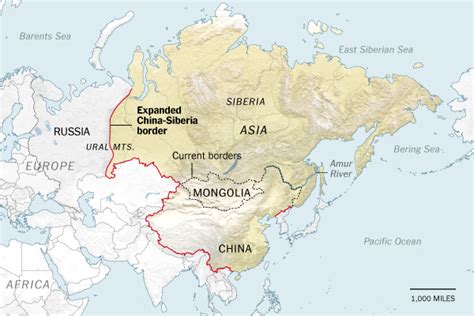siberia frontier china mongolia arcaelogican excavation griffin altai mountains Learn about the ancient Pazyryk culture of the Altai Mountains, a Scythian-Siberian type culture with rich artistic and trade connections. Discover the treasures of the frozen . New and used Mini Excavators for sale near you on Facebook Marketplace. Find great deals or sell your items for free.
0 · south siberia in china
1 · caves in mongolia
2 · buddhist caves in mongolia
3 · altai mountains mongolia
4 · altai mountains ice margins
5 · altai mountains hunting
6 · altai mountains archaeology
Browse a wide selection of new and used MINI excavators from local dealers and private sellers. Compare prices, models, trims, options and specifications between different excavators on Equipment Trader.

south siberia in china
An article that explores the history of Tuva, a Turkic-speaking people of South Siberia, in Chinese and Russian sources. It discusses the geography, population, political status, and cultural . Our survey team located, documented, and examined 25 caves from four regions in the Gobi-Altai Mountains in western Mongolia. We found that most caves do not contain .The typological parallels between the archaeological finds from Liushui and Taklamakan and those from Siberia, Kazakhstan, Mongolia, and northern China might suggest long-distant . The transition from hunting to herding transformed the cold, arid steppes of Mongolia and Eastern Eurasia into a key social and economic center of the ancient world, but .
Learn about the ancient Pazyryk culture of the Altai Mountains, a Scythian-Siberian type culture with rich artistic and trade connections. Discover the treasures of the frozen . A fundamentally new phase in the history of Mongolian archaeology began in 1995 with the formation of the trilateral Joint Mongolian-Russian-American Archaeological . The location and geographic extent of the ancient Scythia varied over time, encompassing the Altai-Sayan region and the adjacent parts of Mongolia, North China and .
Four archaeological sites along the western frontier of China and Mongolia were analyzed for cranial trauma patterns. These patterns were then used to determine levels of violence, who . We have examined 40 assemblages from the following regions: Russian (Gorny or Mountainous) Altai, Central Siberia, Eastern Siberia, the Mongolian Altai and Dzungaria, .Archaeological finds of the last several decades in China, Mongolia, and South Siberia encourage a reconsideration of the nature and extent of cultural exchange between Zhou China and the .An article that explores the history of Tuva, a Turkic-speaking people of South Siberia, in Chinese and Russian sources. It discusses the geography, population, political status, and cultural .
Our survey team located, documented, and examined 25 caves from four regions in the Gobi-Altai Mountains in western Mongolia. We found that most caves do not contain .The typological parallels between the archaeological finds from Liushui and Taklamakan and those from Siberia, Kazakhstan, Mongolia, and northern China might suggest long-distant . The transition from hunting to herding transformed the cold, arid steppes of Mongolia and Eastern Eurasia into a key social and economic center of the ancient world, but .
Learn about the ancient Pazyryk culture of the Altai Mountains, a Scythian-Siberian type culture with rich artistic and trade connections. Discover the treasures of the frozen . A fundamentally new phase in the history of Mongolian archaeology began in 1995 with the formation of the trilateral Joint Mongolian-Russian-American Archaeological .
The location and geographic extent of the ancient Scythia varied over time, encompassing the Altai-Sayan region and the adjacent parts of Mongolia, North China and .
Four archaeological sites along the western frontier of China and Mongolia were analyzed for cranial trauma patterns. These patterns were then used to determine levels of violence, who .

We have examined 40 assemblages from the following regions: Russian (Gorny or Mountainous) Altai, Central Siberia, Eastern Siberia, the Mongolian Altai and Dzungaria, .
Archaeological finds of the last several decades in China, Mongolia, and South Siberia encourage a reconsideration of the nature and extent of cultural exchange between Zhou China and the .An article that explores the history of Tuva, a Turkic-speaking people of South Siberia, in Chinese and Russian sources. It discusses the geography, population, political status, and cultural . Our survey team located, documented, and examined 25 caves from four regions in the Gobi-Altai Mountains in western Mongolia. We found that most caves do not contain .The typological parallels between the archaeological finds from Liushui and Taklamakan and those from Siberia, Kazakhstan, Mongolia, and northern China might suggest long-distant .
The transition from hunting to herding transformed the cold, arid steppes of Mongolia and Eastern Eurasia into a key social and economic center of the ancient world, but .
caves in mongolia
Learn about the ancient Pazyryk culture of the Altai Mountains, a Scythian-Siberian type culture with rich artistic and trade connections. Discover the treasures of the frozen . A fundamentally new phase in the history of Mongolian archaeology began in 1995 with the formation of the trilateral Joint Mongolian-Russian-American Archaeological .
The location and geographic extent of the ancient Scythia varied over time, encompassing the Altai-Sayan region and the adjacent parts of Mongolia, North China and .Four archaeological sites along the western frontier of China and Mongolia were analyzed for cranial trauma patterns. These patterns were then used to determine levels of violence, who . We have examined 40 assemblages from the following regions: Russian (Gorny or Mountainous) Altai, Central Siberia, Eastern Siberia, the Mongolian Altai and Dzungaria, .

kijiji saskatchewan skid steer attachments
When finding a reliable manufacturer and high-quality mini excavators, you need to consider a few factors. Actually, there also exist small companies in China that sell mini excavators. However, the problem with those factories is that they can disappear at any . See more
siberia frontier china mongolia arcaelogican excavation griffin altai mountains|altai mountains ice margins